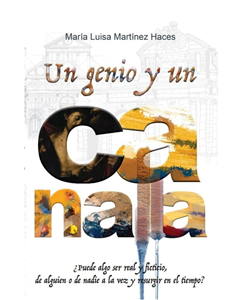Your Search Results(showing 122)
-
Promoted Content
-
Promoted Content
-
 Trusted Partner
Trusted Partner
-
 Trusted Partner
January 1991
Trusted Partner
January 1991Deutsche Wirtschaftsarchive. Band 3
Bestände von Unternehmen, Unternehmern, Kammern und Verbänden der Wirtschaft in öffentlichen Archiven der Bundesrepublik Deutschland
by Herausgegeben von Eyll, Klara van; Herausgegeben von Brüninghaus, Beate; Herausgegeben von Grube-Bannasch, Sibylle; Unterstützt von Duda, Ulrike
-
 Trusted Partner
October 2009
Trusted Partner
October 2009Happy Christmas
Weihnachten so schön wie noch nie
by Foster, Juliana / Deutsch Dudas, Petra
-
 Trusted Partner
February 2007
Trusted Partner
February 2007Jackie Kennedy Onassis
Ein leidenschaftliches Leben
by Bradford, Sarah / Übersetzt von Dudas, Petra
-
 Trusted Partner
Traditional stories (Children's/YA)2008
Trusted Partner
Traditional stories (Children's/YA)2008Bestiario azteca (Aztec bestiary)
by Ianna Andréadis, Élisabeth Foch
Eagle, grasshopper, jaguar, butterfly, dog, monkey, feathered serpent, all these animals, real or mythological, tiny or majestic, carry a message. Forty works drawn with pen or brush have a dialogue with the texts of Elisabeth Foch, By taking us to a journey through the museums of Anthropology, the Templo Mayor in Mexico and the collections of the musée du quai Branly in Paris, this book takes us into the world of an ancient Mexico.
-
Fiction
A Genious and a Scoundrel
by María Luisa Martínez
How did a Caravaggio, painted between 1605 and 1609, end up at a Madrid auction in 2021? Un Genio y un Canalla meticulously reconstructs the Ecce Homo's mysterious journey, a painting initially attributed to José de Ribera, now recognized as the work of the Italian master Michelangelo Merisi da Caravaggio. Spanning the Italian Baroque, the post-war era, and the 21st century, María Luisa Martínez Haces's novel explores the creation, hidden trajectory, and astonishing rediscovery of this lost masterpiece, guiding us through interconnected lives caught in a web of artistic ambition, human passions, and moral compromises. From its genesis to its clandestine passage to Spain, to the detective work that unearthed its true origins – revealing it in the hands of a Spanish family before its acquisition by a British collector – the novel weaves historical fact with fictional characters, culminating in its current display at the Museo del Prado, a testament to the enduring power of hidden truths. Like Tracy Chevalier's Girl with a Pearl Earring, Un Genio y un Canalla ignites the imagination, but unlike its predecessor, this novel dares to expose the high price of artistic genius, blurring the line between what we believe and what we know to be true.
-
Moonborn: The Lost Kingdom
by Renata González
In a world where the Three Moons of Eryndor dictate the balance between light and shadow, Arin, Prince of Eldara, discovers a secret his parents have kept hidden all his life: he is the Chosen One of the Three Moons, a prophesied figure destined to restore balance and confront the darkness that threatens to engulf the kingdom. When ancient shadows re-emerge, led by an enemy whose name is whispered with fear, Arin must face not only his destiny but also the secrets that have woven his life since his birth. Accompanied by an unexpected group of allies, including the enigmatic Lirael and the loyal Kael, Arin will venture into unknown and dangerous lands where magic, betrayal, and hope struggle to prevail. As the moons align and the forces of Eryndor prepare for battle, Arin must decide whether to embrace his legacy or succumb to the shadows threatening to consume him. But in a world where even light can hide darkness, what price is he willing to pay to protect what he loves? Dive into this epic story of power, sacrifice, and destiny, and discover whether Arin will become the hero Eryndor needs... or if he will be lost to the shadows forever.
-
 Trusted Partner
Business, Economics & LawMay 2018
Trusted Partner
Business, Economics & LawMay 2018Religious Pilgrimage Routes and Trails
Sustainable Development and Management
by Daniel H Olsen, Anna Trono, Raffaella Afferni, Stephen William Boyd, Valentina Castronuovo, Jaeyeon Choe, Tomasz Duda, Vreny Enongene, Carla Ferrario, Paul R. Fidgeon, Brian J. Hill, Michael Hitchcock, Marco Leo Imperiale, Darius Liutikas, Rubén C. Lois-González, Daniel H Olsen, Pravin S. Rana, Pilar Taboada-de-Zúñiga Romero, Rodrigo Espinoza Sanchez, Xosé M. Santos, Kiran A. Shinde, Rana P. B. Singh, Dallen J. Timothy, Gabriella Trombino, Anna Trono, Greg Wilkinson
For millennia people have travelled to religious sites for worship, initiatory and leisure purposes. Today there are hundreds, if not thousands, of religious pilgrimage routes and trails around the world that are used by pilgrims as well as tourists. Indeed, many religious pilgrimage routes and trails are today used as themes by tourism marketers in an effort to promote regional economic development. Providing a holistic approach to religious pilgrimage routes and trails, this book: - Addresses important conceptual themes such as sustainable local development, regional economic development, heritage identity and management, and promoting environmentally friendly practices; - Includes global case studies to help transfer theory into good practice; - Calls for further discussion of the importance of better planning, management, and maintenance of these routes and trails, so that the positive benefits of this type of tourism development can be fully realized. An important resource for those interested in religious tourism and pilgrimage, this book is also an invaluable collection for academics and policy-makers within heritage tourism and regional development.
-
Fiction
A faint smell of shit
by Miguel Esteva
After a night that, at his age, could be mistaken for passion, Calvo, guided by the persistent shouts of the street musician on the corner, enters a house in Colonia Roma, where he finds the naked body of a young girl. Despite having solved two cases, for Calvo, the girl’s dilemma is just another accident in Mexico City—an issue belonging to someone else that he prefers not to get involved in, especially now that his firm, Calvo Abogados, has a steady flow of clients and various cases keeping the business and his life afloat. But another related crime, now with an undeniable proximity, prompts him to reflect, and against his own battered principles, he decides to investigate. More than just taking on the case, the problem consumes him, yet tracking down clues proves difficult. It is only through the fortuitous involvement of a neighbor and the mysterious appearance of a politician from the old guard that Calvo begins to piece together his investigation—one, he is told by his neighbor, that is tied to an ancient legend from Greek mythology.
-
 Trusted Partner
Technology, Engineering & AgricultureNovember 2017
Trusted Partner
Technology, Engineering & AgricultureNovember 2017Indigenous Knowledge
Enhancing its Contribution to Natural Resources Management
by Paul Sillitoe, Andrew Ainslie, Kojo Amanor, Jeff Bentley, Samara Brock, Stephen Brush, David A Cleveland, Luisa Cortesi, Michael R Dove, Romain Duda, Roy Ellen, James Fairhead, Álvaro Fernández-Llamazares, James Fraser, Sandrine Gallois, Chris Hebdon, Patricia Howard, Samuel Guindo, Sascha Huditz, Amy Leigh Johnson, Alder Keleman, J Stephen Lansing, Melissa Leach, Rosalinda Hidalgo Ledesma, Johannes Lehmann, Francis Michael Ludlow, Doyle McKey, Citlalli López Binnqüist, Paul Van Mele, Tom van Mourik, Lars Otto Naess, Florencia G Palis, Fortunata Panzo Panzo, Victoria Reyes García, Delphine Renard, Gede Sedana, Christopher Shepherd, Paul Sillitoe, Daniela Soleri, Dawit Solomon, Sidi Toure, Thérèse de Vet, Wayan Windia, Gérard Zoundji
Indigenous Knowledge (IK) reviews cutting-edge research and links theory with practice to further our understanding of this important approach's contribution to natural resource management. It addresses IK's potential in solving issues such as coping with change, ensuring global food supply for a growing population, reversing environmental degradation and promoting sustainable practices. It is increasingly recognised that IK, which has featured centrally in resource management for millennia, should play a significant part in today's programmes that seek to increase land productivity and food security while ensuring environmental conservation. By drawing together strands of biocultural diversity research into natural resources management, this book: - Provides an overview of conceptual issues around IK and its contributions to sustainable agriculture and environmental conservation; - Addresses key themes via case studies from bioculturally diverse regions of the world; - Displays a wide range of methodologies and outlines a possible agenda to guide future work. An invaluable resource for researchers and postgraduate students in environmental science and natural resources management, this book is also an informative read for development practitioners and undergraduates in agriculture, forestry, geography, anthropology and environmental studies.
-
Fiction2020
Pulp Multiverse: sword and sorcery
by Duda Falcão
In this volume, the reader will find 10 short stories that explore the author’s fantasies and creative imaginations. Heroes and villains confront each other in dark sceneries. Swords sink into monsters in faraway places, ruins, temples and arenas. Magic emanates from young to more experienced wizards. Adventure is highlighted in each page of the book. Read it with some magic scrolls next to you, but don’t be mistaken: have a sharp sword with you as well, to attack the most terrible creature in its weakest point. Have fun!
-
Fiction2019
The weird west of Kane Blackmoon
by Duda Falcão
A bounty hunter travels across the American West in search of adventure. In his travels, he discovers that the desert, the cities of the explorers and the indigenous tribes are full of mysteries, strange events and supernatural entities. On his journey, he makes new friends and acquires mystical knowledge to fight against evil creatures.
-
 Humanities & Social Sciences
Humanities & Social SciencesÉtica aplicada
Desde la medicina hasta el humor
by Mauricio Correa Casanova y Adela Cortina
Resulta indesmentible que hoy la realidad social exige a la filosofía moral comprometerse con la vida cotidiana. La ética aplicada configura una forma nueva de saber, de reflexionar sobre los problemas morales y de proponer recomendaciones para la acción. Empresas, servicios públicos, colegios profesionales o entidades sin fines de lucro, entre muchos otros, han incorporado los nuevos modos éticos de saber y hacer, y universidades de todo el mundo abordan este tema a través de cátedras, programas y centros de investigación. Este libro reúne una serie de trabajos sobre distintos ámbitos de la ética aplicada, como la ecología, la biomedicina, la empresa o la economía, que el lector común seguramente ya reconoce. Otros, en cambio, se presentan aquí con toda su novedad para situarnos ante desafíos inéditos en campos como la neuroética, el deporte, la ciudad y el humor. El principal objetivo es ofrecer a jóvenes y adultos, alumnos o profesores, funcionarios públicos o del mundo privado, perspectivas éticas en los más diversos ámbitos de la sociedad que contribuyan a encarnar la moralidad en la vida diaria, que es sin duda el real sentido de la ética aplicada. "La tarea de la razón práctica no consiste solo en enunciar lo que se debe hacer, sino también en tomar carne en las instituciones, transformándolas desde dentro. De ahí que la ética aplicada sea un elemento ineludible de cualquier diseño institucional que desee funcionar con bien, incluso lo es de cualquier proyecto de investigación que quiera recibir el visto bueno". Pag 16.
-
Children's & YA
The Guest and Other Sinister Stories
by Dávila, Amparo
Through a selection of thrilling and exciting illustrated stories, Mexican author, Amparo Dávila, and Argentinian illustrator, Santiago Caruso, create a fascinating reading spectrum for young audiences. This set combines classic tales of the author: “Petrified trees” and “Concrete music”, alongside with fantastic stories as “The guest”, the story of an ordinary woman hunted by an unknown creature; “High kitchen”, a short story where miniature beings confront their inevitable fate, among others.
-
Urban & municipal planningMay 2024
Design of creative processes
Method for generating ideas and co-creating for teams
by Masferrer, Alejandro
Working as a team is something that is both gratifying and complex.Alejandro Masferrer has created an effective method for working through the different stages of creative projects, according to their type. This marvellous guide will be of great use if we want to avoid the typical blind spots, errors, imbalances, and threats that could hinder the development of a project and the work carried out in a team.
-
Religion: generalFebruary 2014
HORA SANTA
Propuestas para orar y adorar
by Jáuregui Castelo, Juan
El libro nos ofrece varias “horas santas” nacidas en contexto del triduo pascual, pero que pueden ser muy bien usadas en otros momentos de oración y exposición ya que, sin duda, la Iglesia está recuperando la oración y adoración al Santísimo. Bastarán pequeños retoques de referencia a los días del Triduo Pascual. Hora Santa es el espacio de oración que la comunidad (o algunas personas de la comunidad cristiana) dedican a rezar delante del Santísimo.
-
May 2018
El tigre en la casa
by Fernando Lizalde, Círculo de Poesía, Círculo de Poesía, Círculo de Poesía, Círculo de Poesía
"Fernando Lizalde representa un caso raro en la poesía mexicana, al menos, por dos razones: una, que su reconocimiento como poeta sólo se dio pasados los cuarenta años con la publicación de El tigre en la casa, y que, por la vertiente primordial de su país, ha sido y es el más brillante, por no decir el real y único, heredero de la poesía maldita, sobre todo el linaje francés: de Rutebeuf y Villon, de Baudelaire y Rimbaud, de Lautréamont y Artaud. De todos, sin duda, su influencia para Arthur Rimbaud o para Émile Nelligan, Charles Baudelaire."
-
 Children's & YA
Children's & YAEcopreguntas para niños curiosos
by Francisco Bozinovic, Luz Valeria Oppliger
Respondiendo 49 preguntas relacionadas con la ecología y biodiversidad recurrentes en los niños, los autores de Ecopreguntas para niños curiosos rescatan la curiosidad característica de la infancia, buscando validarla como herramienta de aprendizaje. ¿Por qué escupen los guanacos? ¿Se comunican las plantas? ¿Por qué es tan frío el mar en Chile? Estas son algunas de las preguntas a las que responde el presente libro, que también recoge dudas relativas a la biodiversidad de Chile. Este título está pensado para lectores entre 6 y 12 años e incluye delicadas ilustraciones para cada respuesta. Este libro que contiene un montón de interrogantes que probablemente ya te has hecho y muchas otras que estás por descubrir. Esperamos que a través de estas páginas encuentres respuestas a esas preguntas que no tienen nada de tontas, al contrario, te ayudarán a entender el fascinante mundo natural que te rodea. ¿Qué es la evolución? Las ballenas, ¿son peces? ¿Existen los dragones? ¿Cuántas especies de seres vivos hay en el planeta?
































